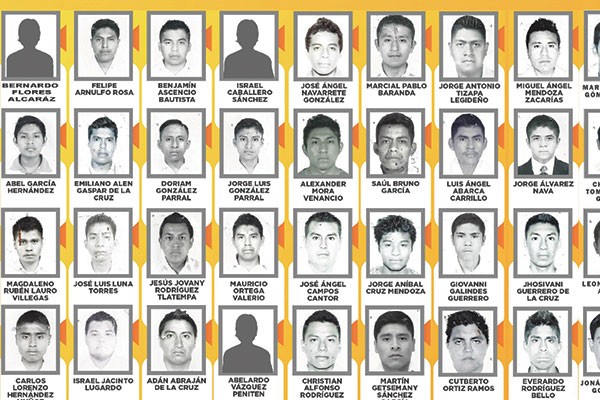Thousands of people marched through Mexico City on 26 September to mark the one-year anniversary of 43 students disappearing in the southern state of Guerrero.
The anniversary sparked widespread outrage at government corruption and fuelled opposition to an already unpopular president.
Relatives of the missing students led the “march of national indignation” through the Mexican capital, with many protesters holding aloft images of their missing sons. Protesters held banners which read “We are missing 43” and “It was the state”, according to local newspapers.
Family members have been camping in Zocalo square at the centre of Mexico City’s historic sector.
Organisers said the demonstrations were also a reaction to government inaction over the thousands of people missing since the drug wars ignited in 2006, the Associated Press reported.
The 43 students from the Ayotzinapa Rural Teachers College disappeared on 26 September 2014 while on a field trip. The disappearance came after a clash with police in Iguala.
According to Mexico’s former attorney general, local police illegally detained the students and then turned them over to the local drug gang Guerreros Unidos, who allegedly killed them and incinerated their remains.
The families of the missing students have refused to accept their sons’ deaths until their remains are found.
Mexican President Enrique Peña Nieto met with the missing men’s parents, who were almost halfway through a 43-hour fast in the capital in honour of their sons.
“We are on the same side and we are working on the same goal … to know what happened to your sons and punish each and every one of those who are responsible. We are searching for the truth together,” Nieto told the parents at the closed-door meeting, according presidential spokesperson Eduardo Sanchez.
The spokesperson said in a statement that Nieto had ordered the creation of a special prosecutor’s office to investigate the thousands of disappearances throughout the Central American country, though he did not explain how the new office would differ from other special prosecutor units created in 2013.
The president claims that the investigation into the 43 missing students remains open, but Vidulfo Rosales, a lawyer for the parents, said the president had not yet “committed to fulfilling any” of the parents’ demands.
Earlier in September, Mexico’s National Human Rights Commission detailed 32 problems and inconsistencies with the government’s investigation in a damning report. The problems included witnesses who were never questioned, key evidence left unexamined, and the failure to build basic victim profiles.
Mexican criminal justice expert Layda Negrete told The World Post that by presenting such flawed evidence as truth, the authorities are reinforcing the lack of transparency and right to a fair trial in Mexico’s deeply troubled justice system.
In New York, Nieto was greeted with chants of “Murderer!” by protesters holding a vigil for the students as he made his way to a meeting at the United Nations on 27 September.
Nieto faces a record low approval rating of 35 percent, which commentators link to his failure to effectively manage the drug violence and corruption that have devastated Mexico in recent years.
“The images of the missing youths and their distraught families shook Mexican society, provoking hundreds of thousands to take to the streets demanding justice,” wrote Ioan Grillo in the New York Times earlier in September.
“It became a watershed case, emblematic of the killings and disappearances that have ravaged this nation.”



